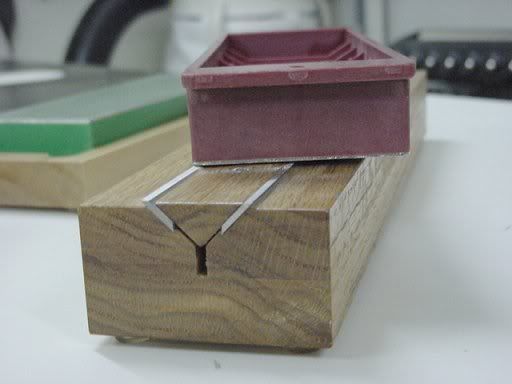Has anyone here tried honing your own jointer blades? I want to share my experience with this. I first tried this doing it by hand with sandpaper on glass honing down to only 1000 grit. Holy smoke! the results were phenomenal: I could surface boards with the most difficult grain with hardly any tear out. There was some because my honing wasn't perfect but I found that the blade bevel is wide enough to do a pretty fair job, far better than a commercially sharpened blade and its not difficult with an 8" jointer knife. Ten inch might be a little "iffy".
A month ago I bought the Veritas honing jig and the results were far better. Now I can run bird's eye through without tearing out a single eye after buying some 3M micro paper. Never again will I have to send out jointer knives for sharpening. What a boon!




 Reply With Quote
Reply With Quote




